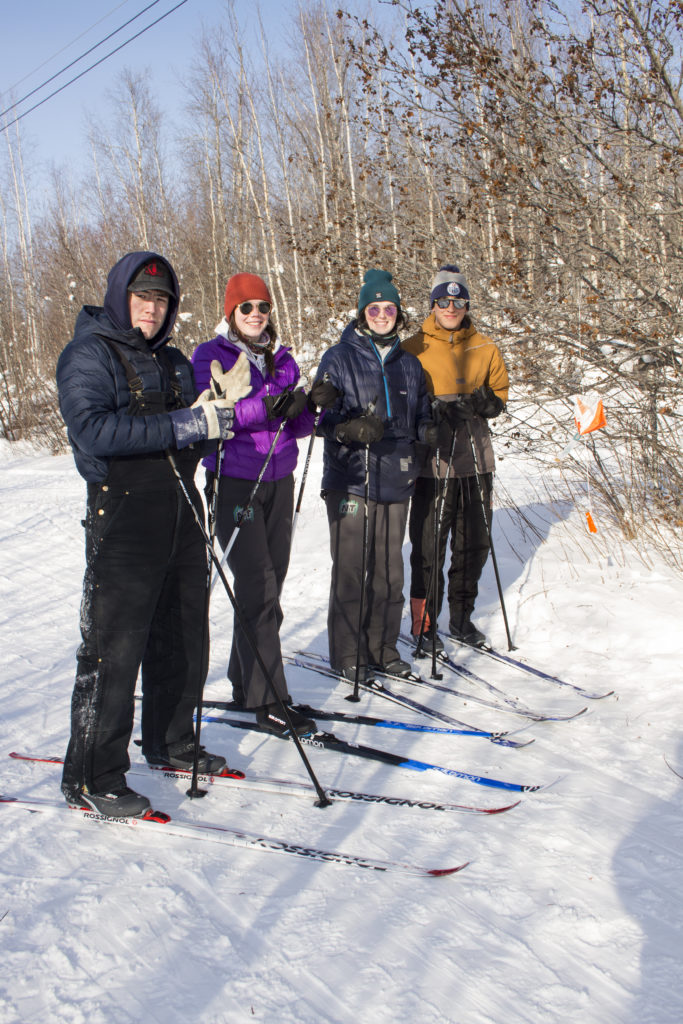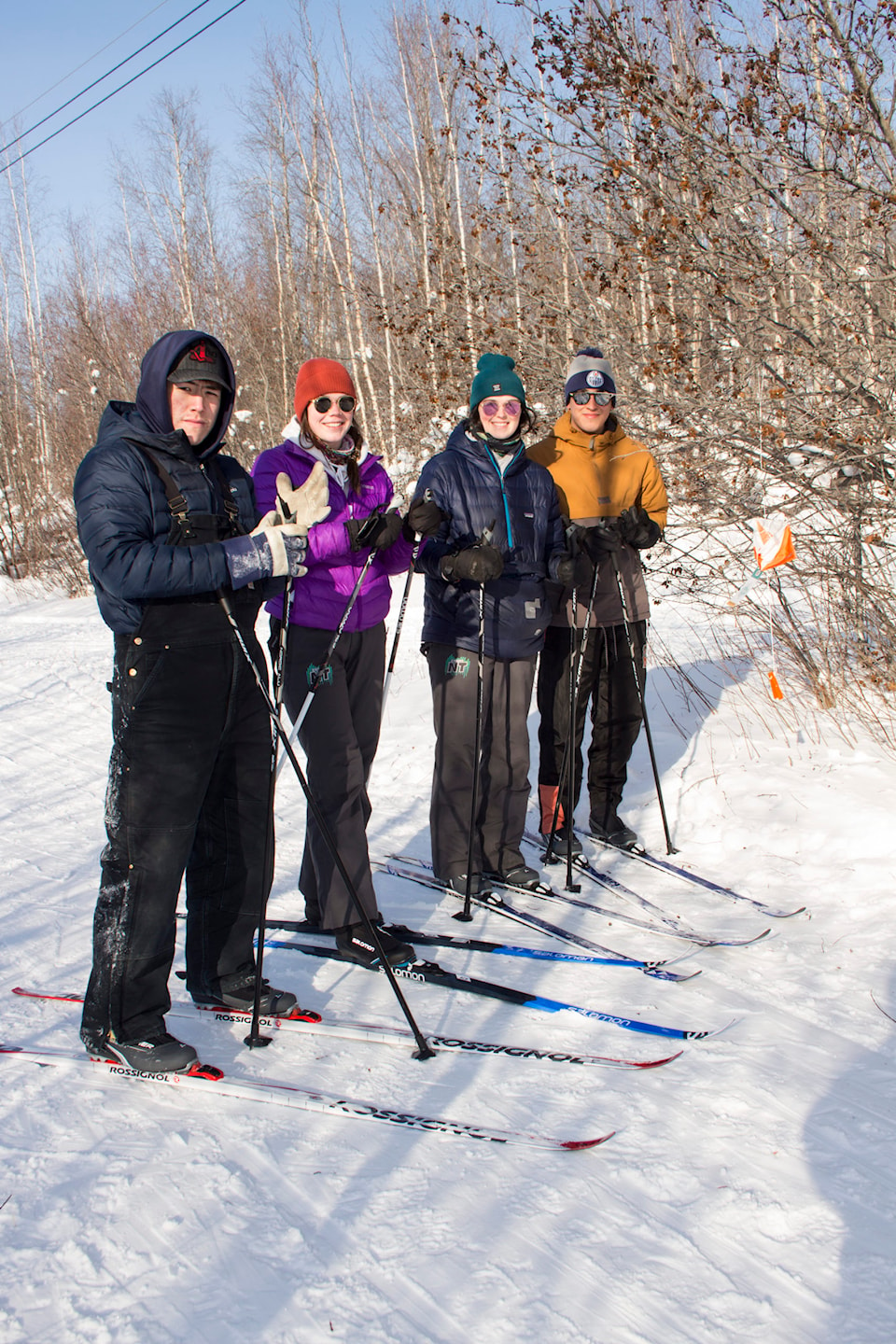There seems to be an infinite series of ways to celebrate the ratio of the circumference of any circle to its diameter, and Aurora Research Institute and Inuvik Ski Club took that to heart by hosting an orienteering course for International Pi (π) Day March 14.
Giving contestants a map and a series of locations to hit up, the Pi Day Ski-O(rienteering) race ran from 12 p.m. to 5 p.m. Contestants were scored on how long it took them to complete the course, which was a series of check points each with their own fact about the mathematical symbol.

Eric Bowling/NNSL photo
"Faye d'Eon-Eggertson (of the Inuvik Ski Club) and the ARI outreach team have been wanting to do an outdoor orienteering type event for a long time," said ARI outreach coordinator Annika Trimble. "We considered it for GeoWeek in November but decided to wait until Spring. The combination of spring break and Pi Day seemed perfect!
"Pi is a pretty fascinating number which is used in everything from geometry to navigation to astrophysics to communications. Which makes Pi Day a fun opportunity to celebrate math – and pie too, let’s be honest. Also Pi Day is also Albert Einstein’s birthday!"
All contestants were entered in a draw for a free pie, and prizes were awarded for the fastest time on each course. In total, 75 people came out to learn about π, largely families with children under 10.
Two courses were set up — the main course, which was of course 3.14 kilometres long and had 11 checkpoints, and a much shorter course with four checkpoints. Anyone who completed either course was entered into a draw to win a free pie and bonus entries were given to people who could answer skill testing questions about π. A pie was also offered for the fastest time on each course — in total, 12 pies were given out.
"π" is usually calculated at 3.14, but is considered an "infinite series" — meaning the decimal numbers go on for an infinite number of digits — to date it has been calculated to 31,415,926,535,897 (that's over 31 trillion) decimal places. It is the number you will always get when you divide the circumference of a circle by its diameter.
Aside from being used to calculate various dimensions of a circle, such as its circumference, diameter and radius, π is used in all sorts of industries and practices in construction, engineering, music, air travel and sciences.
It was originally discovered by the Greek mathematician Archimedes of Syracuse, who lived 287 to 212 B.C.E.
